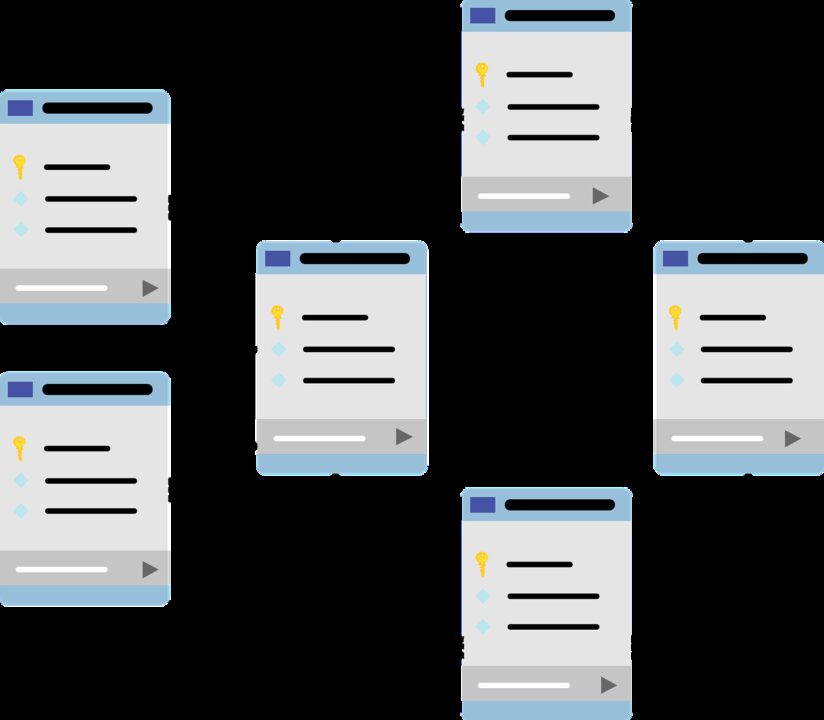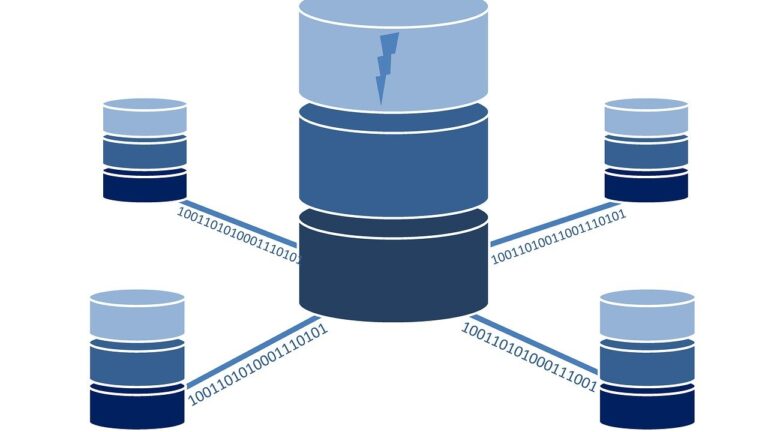MongoDB is a popular NoSQL database designed for high performance, high availability, and easy scalability. The system design of MongoDB involves several components and mechanisms working together to handle data storage, retrieval, and management efficiently. Below is a detailed explanation of the system design for MongoDB and its related components:
Introduction to MongoDB
MongoDB is a document-oriented database, which means it stores data in flexible, JSON-like documents rather than traditional table-based relational databases. This structure allows for more dynamic and hierarchical data models. Each document in MongoDB is a collection of key-value pairs, where values can be various data types, including arrays and nested documents.
MongoDB Architecture
The architecture of MongoDB is built around several key components:
- Documents: The primary data format in MongoDB is BSON (Binary JSON). BSON is a binary representation of JSON-like documents, making it efficient for storage and querying. Documents can contain embedded documents and arrays, allowing complex data structures within a single document.
- Collections: Documents are grouped into collections. A collection is akin to a table in relational databases but without a fixed schema. Collections do not enforce document structure, allowing flexibility in data storage.
- Databases: A database in MongoDB is a container for collections. Each database has its own set of files on the file system, and a single MongoDB server can manage multiple databases.
- Replica Sets: MongoDB ensures high availability and data redundancy through replica sets. A replica set is a group of MongoDB servers that maintain the same data set, providing redundancy and failover capabilities. A replica set typically includes a primary node, secondary nodes, and an optional arbiter node.
- Primary Node: The primary node receives all write operations. It applies these operations and records them in the oplog (operations log).
- Secondary Nodes: Secondary nodes replicate the data from the primary node by reading from the primary’s oplog. They can serve read operations, but are eventually consistent.
- Arbiter Node: An arbiter does not hold data but participates in elections to choose a new primary when needed.
- Sharding: To handle large-scale data and high-throughput applications, MongoDB employs sharding. Sharding is the process of distributing data across multiple servers or clusters. A sharded cluster consists of:
- Shards: Each shard is a replica set that holds a subset of the data.
- Config Servers: Config servers store metadata and configuration settings for the cluster. They keep track of the data distribution across shards.
- Query Routers (mongos): Query routers interface with client applications and route queries to the appropriate shards based on the data distribution.
- Indexes: Indexes improve the performance of search queries in MongoDB. They can be created on any field in a document, supporting efficient query execution. MongoDB supports various types of indexes, including single field, compound, multikey, text, and geospatial indexes.
Data Storage and Retrieval
MongoDB’s data storage and retrieval mechanisms are designed to optimize performance and flexibility:
- Storage Engine: The storage engine is the core component that manages how data is stored, updated, and queried. MongoDB supports multiple storage engines, the most prominent being WiredTiger, which provides high performance and advanced features like compression and document-level locking.
- Write Operations: Write operations in MongoDB (insert, update, delete) are handled by the primary node in a replica set. The primary applies the operations and logs them in the oplog. Secondary nodes replicate these operations asynchronously to ensure data consistency.
- Read Operations: Read operations can be directed to either the primary node or secondary nodes, depending on the read preference settings. This allows load distribution and better performance for read-heavy applications.
- Aggregation Framework: MongoDB provides an aggregation framework for performing data transformations and computations. It includes operations like filtering, grouping, and sorting. Aggregations are performed using a pipeline of stages, where each stage processes the data and passes it to the next stage.

High Availability and Fault Tolerance
MongoDB ensures high availability and fault tolerance through replica sets and automatic failover mechanisms:
- Replica Sets: As mentioned, replica sets provide redundancy by replicating data across multiple nodes. If the primary node fails, an election is held to choose a new primary from the secondary nodes.
- Elections: Elections are automatically triggered when the primary node becomes unavailable. Secondary nodes vote to elect a new primary based on various criteria, including the highest priority and most recent oplog entries.
- Automatic Failover: When a new primary is elected, it starts accepting write operations, ensuring minimal downtime. The failed node can be brought back online and will rejoin the replica set as a secondary after catching up with the latest data.
Scalability
MongoDB’s scalability is achieved through sharding, which allows horizontal scaling by distributing data across multiple servers:
- Shard Keys: Sharding requires defining a shard key, which is a field in the document used to distribute the data. The choice of shard key is crucial for balanced data distribution and performance.
- Chunks: Data is divided into chunks based on the shard key. Each chunk is assigned to a shard. MongoDB dynamically balances chunks across shards to ensure even data distribution.
- Query Routing: Query routers (mongos) direct queries to the appropriate shards based on the shard key. This ensures efficient query execution and minimizes data transfer between shards.
Security
MongoDB offers various security features to protect data and control access:
- Authentication: MongoDB supports multiple authentication mechanisms, including username/password, LDAP, and Kerberos. Authentication ensures that only authorized users can access the database.
- Authorization: Role-based access control (RBAC) allows fine-grained control over database operations. Users are assigned roles with specific permissions, restricting access to sensitive data and operations.
- Encryption: Data can be encrypted both at rest and in transit. Encryption at rest is handled by the storage engine, while TLS/SSL encryption secures data in transit between clients and MongoDB servers.
- Auditing: MongoDB provides auditing capabilities to track database activity. Audit logs record details of operations performed, helping in compliance and security monitoring.
Backup and Recovery
MongoDB offers several options for backup and recovery to protect data integrity:
- Mongodump and Mongorestore: These tools allow for creating backups by exporting data to BSON files and restoring it when needed.
- Snapshots: Storage engine-level snapshots provide point-in-time backups. For instance, WiredTiger supports snapshot-based backups.
- Cloud Backup: MongoDB Atlas, the managed cloud service, provides automated backups and point-in-time recovery, simplifying backup management.
Monitoring and Management
Effective monitoring and management are crucial for maintaining MongoDB performance and reliability:
- MongoDB Management Service (MMS): MMS provides comprehensive monitoring and alerting for MongoDB deployments. It offers insights into performance metrics, replica set status, and sharded cluster health.
- Ops Manager: Ops Manager is an on-premises tool for managing MongoDB deployments. It provides automation for backup, recovery, and performance optimization.
- Monitoring Tools: MongoDB integrates with various monitoring tools like Prometheus, Grafana, and Datadog, allowing customized monitoring dashboards and alerting.
There are additional aspects and details worth exploring to provide a comprehensive understanding. These include internal workings, concurrency control, durability mechanisms, and more advanced features. Let’s delve into these parts:
Concurrency Control
MongoDB uses various mechanisms to handle concurrent operations and ensure data consistency:
- Document-Level Locking: In earlier versions, MongoDB used global or database-level locks, but modern versions employ document-level locking. This fine-grained locking allows concurrent operations on different documents within the same collection, significantly improving performance and reducing contention.
- Multi-Version Concurrency Control (MVCC): The WiredTiger storage engine uses MVCC, which allows readers to access a consistent snapshot of the data while writers are making updates. This ensures that read operations are not blocked by write operations, improving concurrency and performance.
Durability and Write Concerns
MongoDB provides various options to ensure data durability and control the acknowledgement of write operations:
- Journaling: The WiredTiger storage engine uses journaling to ensure durability. Changes are first written to a journal before being applied to the data files. In the event of a crash, MongoDB can recover the data from the journal, ensuring no data loss.
- Write Concerns: Write concerns define the level of acknowledgment requested from MongoDB for write operations. They can be configured to balance between performance and durability. For example:
w: 1: Acknowledges after the write operation has been written to the primary.w: "majority": Acknowledges after the write operation has been replicated to the majority of the nodes in the replica set.w: 0: Does not wait for an acknowledgment, providing maximum performance but no guarantee of durability.
Indexing
Indexes in MongoDB are crucial for optimizing query performance. Various types of indexes are supported:
- Single Field Index: Indexes a single field in a document.
- Compound Index: Indexes multiple fields within a document, supporting complex queries that involve multiple criteria.
- Multikey Index: Indexes array fields, creating separate index entries for each element in the array.
- Text Index: Supports text search queries by indexing the content of string fields.
- Geospatial Index: Supports queries related to geographical data, such as finding documents within a certain radius of a point.
Query Execution
MongoDB’s query execution involves several stages to retrieve and process data efficiently:
- Query Planner: The query planner generates multiple query plans based on available indexes and selects the optimal plan based on cost estimation.
- Execution Engine: The selected query plan is executed by the engine, which fetches and processes data from the storage engine.
- Aggregation Pipeline: The aggregation framework processes data through a series of stages (e.g., match, group, sort) to perform complex data transformations and computations.
Caching
MongoDB employs caching mechanisms to enhance performance:
- WiredTiger Cache: The WiredTiger storage engine uses an in-memory cache to store frequently accessed data and indexes, reducing the need for disk I/O.
- In-Memory Storage Engine: For use cases requiring extreme performance, MongoDB offers an in-memory storage engine that keeps the entire dataset in RAM, eliminating disk access latency.
Horizontal Scaling with Sharding
Sharding allows MongoDB to scale horizontally by distributing data across multiple shards. Key aspects include:
- Shard Key Selection: Choosing an appropriate shard key is critical for balanced data distribution and query performance. A good shard key has high cardinality and distributes write operations evenly.
- Chunk Management: Data is divided into chunks based on the shard key. MongoDB automatically balances chunks across shards to prevent any single shard from becoming a bottleneck.
- Shard Migrations: When a shard becomes overloaded, MongoDB can migrate chunks to other shards to maintain balance.
Advanced Features
- Change Streams: Change streams provide a real-time feed of data changes (inserts, updates, deletes) in a collection. They are useful for building reactive applications and real-time analytics.
- Transactions: MongoDB supports multi-document transactions, allowing atomic operations across multiple documents and collections. Transactions provide ACID guarantees, ensuring data integrity and consistency.
- GridFS: GridFS is a specification for storing and retrieving large files, such as images and videos, in MongoDB. It splits large files into smaller chunks and stores them in collections, allowing efficient storage and retrieval.
Monitoring and Performance Tuning
- Profiler: The MongoDB profiler captures detailed information about database operations, including query execution times and resource usage, helping identify performance bottlenecks.
- Index Usage Statistics: MongoDB provides statistics on index usage, helping optimize indexes based on actual query patterns.
- Diagnostic Tools: Tools like
mongostatandmongotopprovide real-time statistics on MongoDB operations, such as queries per second and memory usage.
Deployment Strategies
- Standalone: A single MongoDB instance, suitable for development and testing environments.
- Replica Sets: Provides high availability and data redundancy for production environments.
- Sharded Clusters: Supports large-scale deployments with horizontal scaling.
Backup and Disaster Recovery
- Point-in-Time Backups: MongoDB supports point-in-time backups using storage snapshots and oplog tailing, ensuring data can be restored to a specific point in time.
- Continuous Backup: MongoDB Atlas provides continuous backup with point-in-time recovery, allowing restoration to any moment within the retention period.
Security Best Practices
- Authentication and Authorization: Implementing strong authentication mechanisms and role-based access control to restrict access to sensitive data.
- Encryption: Encrypting data at rest using storage-level encryption and securing data in transit with TLS/SSL.
- Network Security: Configuring firewalls, virtual private networks (VPNs), and IP whitelisting to protect MongoDB deployments from unauthorized access.
Conclusion
MongoDB’s system design incorporates various components and mechanisms to provide a robust, scalable, and flexible database solution. The comprehensive system design of MongoDB encompasses various components and mechanisms working together to provide a robust, scalable, and flexible database solution. Its support for advanced features like aggregation, security, backup, and monitoring ensures that it can meet the demands of modern applications across different business sectors, including retail analytics, financial services, telecom, healthcare, media, marketing, agriculture, and education technology.
From its document-oriented data model and sophisticated indexing capabilities to its high availability through replica sets and horizontal scaling via sharding, MongoDB is well-equipped to handle the diverse needs of modern applications. Its advanced features, such as transactions, change streams, and GridFS, along with robust security, monitoring, and backup options, make it a powerful choice for a wide range of business sectors, including retail analytics, financial services, telecom, healthcare, media, marketing, agriculture, and education technology. By understanding these components and mechanisms in detail, developers and administrators can leverage MongoDB to build performant, reliable, and scalable applications.



